 |
Uncommon Schuko plugs and sockets |
CEE 7/4 |
other specials |
 |
Uncommon Schuko plugs and sockets |
CEE 7/4 |
other specials |
| Non-standard Schuko plugs are uncommon.
They have characteristics that can be important for very specific
applications only. A few examples are shown below. The use of these
special products is given in the accompanying captions. Red, green and orange Schuko sockets are used in special circuits that offer a safe power supply. |
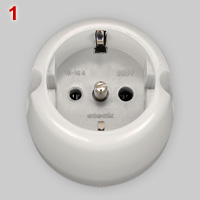 |
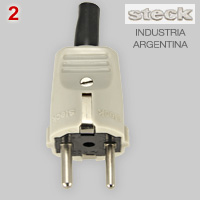 |
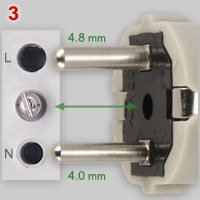 |
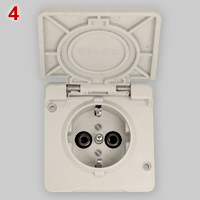 |
| 1 - 4 |
Standard
Schuko (CEE 7/4) plugs and sockets are not polarized, which sometimes
evokes critical comments. However,
polarized Schuko plugs and sockets do exist, but they are hardly known. Polarization is realized by applying a standard 4.8 mm line pin and a thinner - 4.0 mm - neutral pin (see image no. 3). An additional pin in-between the two socket slots has to avoid that the socket will be ruined by attempts to insert a standard, non polarized plug. The additional pin is connected to the earth clips, but earthing is not its prime function. Models exist that have a plastic pin. Rating of no. 1: 10-16A, 250V and nos. 2 and 3: 16A, 220V. The 220V rating indicates the polarized Schuko dates back to the 1990s or earlier. Polarized Schuko devices are a unique Argentinian product. The models shown are made by Steck, a Brazilian company, but INDUSTRIA ARGENTINA is explicitly mentioned on both sockets and plug. The 2012 Steck catalog does not mention polarized Schuko devices anymore. According to the 2012 catalog of the Argentinian company Cambre, a polarized socket is on offer, but not the corresponding plug. Socket no. 1 has been donated by Spezialelectric, Germany. Plug and the other socket have been found on MercadoLibre. The vendor, Agustin Gomez Vega, has given the following details: when in 1995 the office of Clarín Digital (the first digital newspaper in Argentina) was established, polarized Schuko sockets were chosen for a dedicated network that offered protection to computers against voltage spikes and electrical noise. Because Schuko is not the domestic plug standard in Argentina, the choice also prevented abuse of the special network by other appliances. |
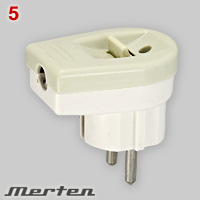 |
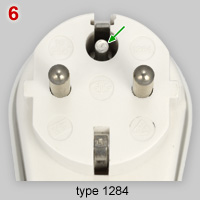 |
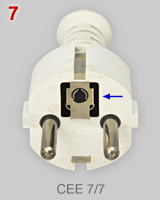 |
 We are supplying electric material and accessories as per German and all foreign standards. www.Spezialelectric.com D-71634 Ludwigsburg Germany |
| 5 - 7 | Schuko
plug with switch. Brand name: Merten (part of Schneider Electric GmbH,
Germany). The same housing is used for CEE 7/4 (Merten type 1284) and for CEE 7/7 (type 1285) plugs. The Schuko-French hybrid plug (1285) has a metal bus for making contact with the earth pin of French sockets. The blue arrow in image no. 7 points to an earth bus in CEE 7/7 plug (not a Merten model). A type 1284 Schuko plug, which does not have this additional metal bus, still has a hole in its plug housing. That means that a type 1284 plug could be used in a French socket, but without earth connection. To be sure that 1284 plugs can only be used in CEE 7/4 (Schuko) sockets, a recessed pin has been added that makes using it in a French socket impossible. The museum is grateful to Mr Marcus Daniel (Schneider Electric Kundenberatung) for providing the information given above. |
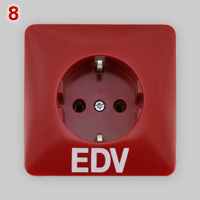 |
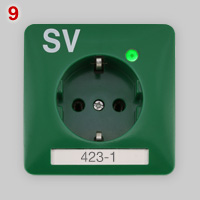 |
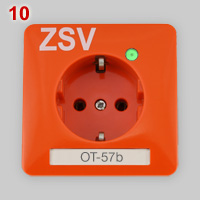 |
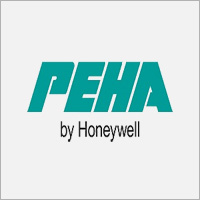 |
| The red, green and orange Schuko socket
are meant for special local circuits that are separated from the main
220-240V network. They can be used with standard CEE 7/4 plugs.
Characteristic details of each of the special circuits are given below.
The Museum is grateful to the Dutch subsidiary of the German company PEHA* for donating the EDV, SV and ZSV sockets. * trademark of Paul Hochköpper und Co., company founded in 1920 in Lüdenscheid (Westfalen, Germany). |
|
| 8 | German abbreviation EDV (Elektronische
Datenverarbeitung) stands for electronic data processing. Red
sockets
are connected to a separate network. When somewhere in an office a
broken piece of equipment blows a standard mains fuse,
computers etc. plugged into red sockets remain in function. For
additional safety surge protection and interruptible power supply
systems can be added to the EDV network. |
| 9, 10 |
SV (Sicherheitsstrom-Versorgung)
stands
for safe power supply. ZSV (Zusätzliche
Sicherheitsstrom-Versorgung*)
means additional safe power supply. Green and orange sockets
are
typically used in hospitals. Both have a green LED indicator light and
a space for an identification code. Medical equipment that must work without interruption has to be powered by SV or ZSV circuits. When grid power is suddenly lost, power is supplied first from the system's internal battery and shortly thereafter by a diesel generator. The time to switch battery power on differs between SV and ZSV, and is respectively max. 15 sec. and max. 0.5 sec. An isolating transformer** is nearly always added to both SV and ZSV circuits. * also known as BSV (Battery SV). ** an isolating transformer isolates the plugged in device from direct contact with the power source. They are used to protect against electric shock, to suppress electrical noise, and they block power transfer between circuits which must not be connected. |
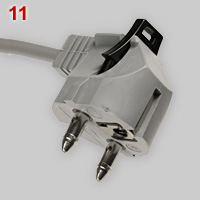 |
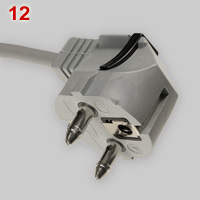 |
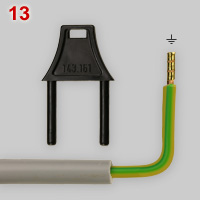 |
|
| ↓ |
↓ |
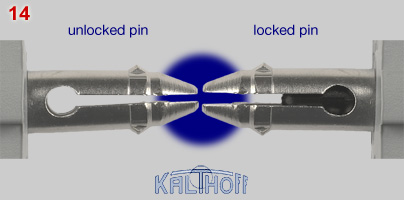 |
|
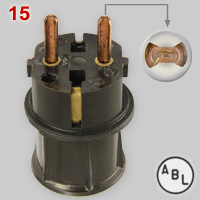 |
| 11 - 14 | Special
Schuko plug that can be locked in a socket. After connecting the plug,
a black plastic key (image no. 13) have the to be pressed down; compare
image nos. 11 and 12. The key widens the hollow pins; see image no. 14.
An increase in width of only 0.3 mm is enough to secure a plug firmly.
A screwdriver is needed to lift the key after which the plug can be
removed. The moulded cord has only one wire (see image 13) connected to the plug earth clips The protective earth plug has been designed to secure earth contact for telecommunication systems and all machines that require a steady earth contact. The special plug has been made by Kalthoff GmbH in Schalksmühle (Westfalen, Germany) and was orderd in 2016. A comparable technique to adapt pin diameter has been used earlier. See images 33-34 on the classic 2-pin plug page. |
| 15 | Obsolete
Bakelite
Schuko plug, rated at 10A-250V, with pins that have two grooves (see
enlarged top view). Besides Schuko plugs with standard 4.8 mm round pins also variants have been made with pins that had one or two grooves. Plugs with different types of pins have been made for different electricity tariffs that were charged in Germany in the 1930s to 1980s. Manufacturer: Albert Büttner Lauf, Bayerische Elektrozubehör GmbH. Dating of plug: mid 1930s. {FSE} See page about classic continental European uncommon plugs for details and matching socket. |
| CEE7/4 |
D i g i t a l M u s e u m o f | |
P l u g s a n d S o c k e t s | specials |